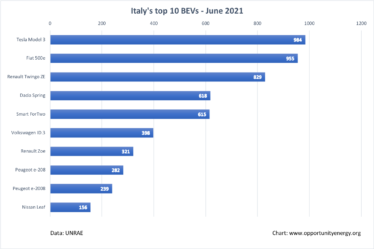
EV Charging

Published on December 13th, 2020 |
by Steve Hanley
December 13th, 2020 by Steve Hanley
Volkswagen has begun testing a new prototype EV wall charger that operates on direct current and is capable of bi-directional operation. The innovative DC charger can charge at 22 kw of power and because it uses direct current, it can cut charging times in half compared to a charger that operates on alternating current.

Credit: Volkswagen
Mark Möller, head of Technical Development & Electric Mobility for Volkswagen says in a press release, “An extensive and needs-based charging structure is the key to the success of electric vehicles. That is why we are working on various approaches that enable customer-oriented, intelligent and flexible charging. Like our flexible quick charging station and the visionary prototype of a mobile charging robot, the DC wallbox is one of the future innovations of the DC charging family for electric vehicles.”
In charging technology based on direct current, the electricity flows directly into the…..traction battery, assuming the vehicle being charged is equipped with a CCS charging port, the company says. “Unlike systems based on alternating current, electric vehicles are charged independently of their integrated on-board chargers that limit charging capacity. Charging the…traction battery with a direct current, on the other hand, increases the potential charging capacity when compared with alternating current. The charging process can therefore be significantly shortened.”
[Note: the “…..” spaces in the above quote are where the word “lead” appeared in the original text of the press release. Because of the peculiarities of the English language, that word can either mean “in the lead,” like a horse out front in a race, or the element lead, which has an unfortunate connotation since the 12 volt battery in most vehicles is a lead-acid unit. To avoid misconceptions, I simply deleted the word “lead” from the quote since it seems obvious the company meant to refer to the battery pack that powers an electric vehicle and not the 12 volt auxiliary battery.]
The bi-directional feature of the new DC chargers means the battery in an electric car could be used to power a residence or small business or become part of a virtual power plant. 20 of the prototype chargers are already in use at Volkswagen factories in Wolfsburg, Braunschweig, Hannover, Salzgitter and Kassel. The goal is to gather the practical experience needed to develop the DC charger quickly and get it into production as soon as possible.
The EV revolution is about more than building an electric car and calling it a day. Volkswagen is looking at all aspects of the transition to electric vehicles and doing everything in its power to keep the revolution moving forward but it’s not alone. Earlier this year, the Spanish company Wallbox also announced a DC bi-directional wall charger. Vehicle to grid technology was considered an impractical dream just a few years ago but it’s beginning to look like ti could be the wave of the future.
Appreciate CleanTechnica’s originality? Consider becoming a CleanTechnica member, supporter, or ambassador — or a patron on Patreon.
Sign up for our free daily newsletter or weekly newsletter to never miss a story.
Have a tip for CleanTechnica, want to advertise, or want to suggest a guest for our CleanTech Talk podcast? Contact us here.
Latest Cleantech Talk Episode

